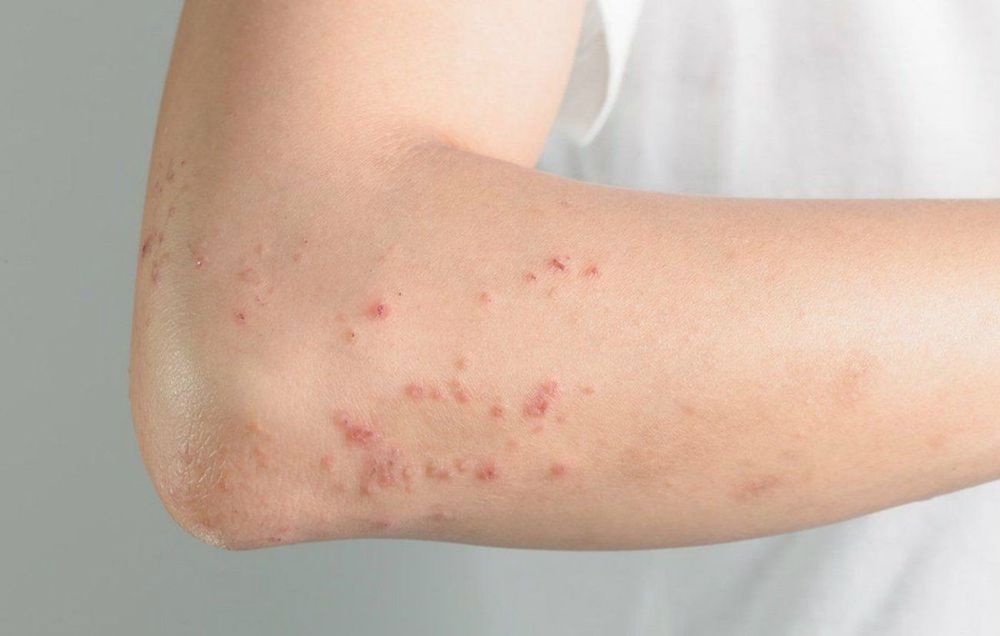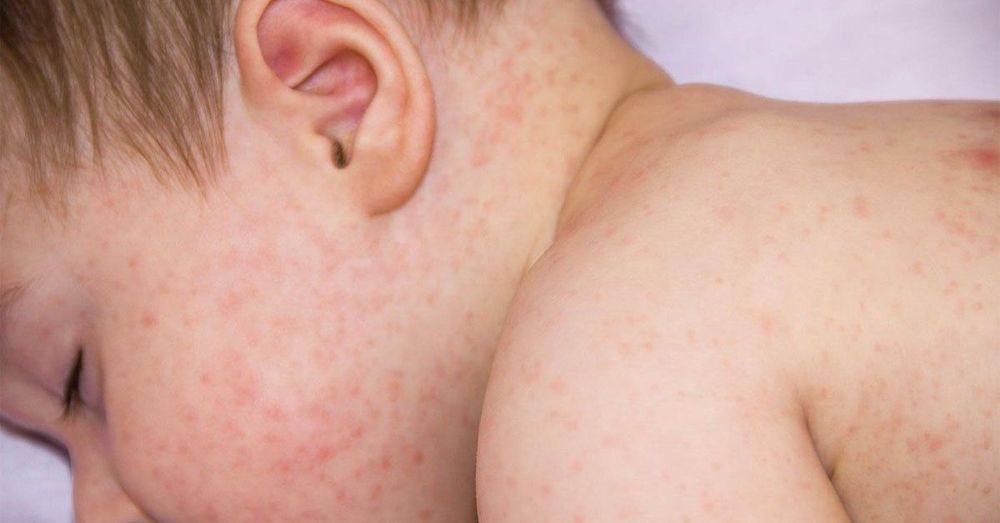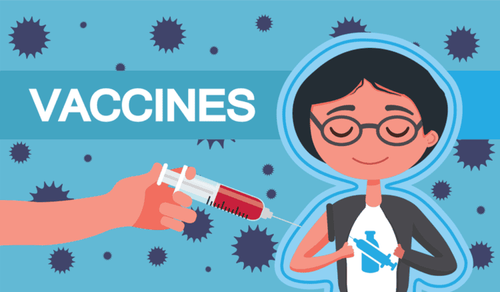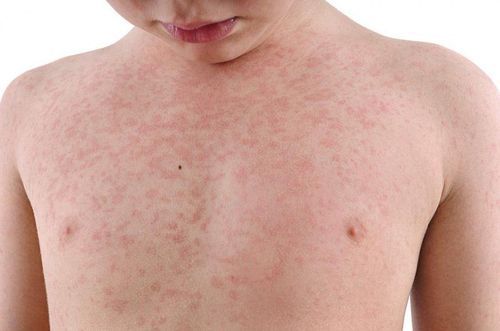This is an automatically translated article.
The article was consulted professionally with BS. Nguyen Hai Ha - Head of Vaccine Unit - Pediatric Outpatient Department - Pediatric Center - Vinmec Times City International Hospital.Measles is an acute infectious disease with symptoms of fever, rash, runny nose, cough, red eyes... the disease can be seen in children and adults, if there is no immunity to prevent the disease, can cause serious illness. Translate. Although measles is less fatal (mortality rate 0.02% in advanced countries, 0.3 - 0.7% in developing countries), complications can be encountered: otitis media, inflammation pneumonia, diarrhea, dry corneal ulcers and sometimes encephalitis after measles, especially in malnourished children....
1. How long is the incubation period for measles?
Measles is caused by measles virus of the family Paramyxoviridae, is a spherical virus, 120-250nm in diameter, weak endurance, easily killed with common disinfectants, sunlight, heat... At 56 degrees Celsius, the virus is killed in 30 minutes.Measles is very contagious and can develop into an epidemic. It is estimated that 90% of those who come into contact with the patient will become infected if they do not have immunity against the measles virus. Therefore, the disease is strongly transmitted in groups without immunity (kindergarten, kindergarten...). The disease is common in children 1 to 4 years old. Children under 6 months are less likely to be infected because they may have maternal immunity. For adults, they are less likely to get sick because they have been infected since childhood or have been vaccinated against the disease. Adults who get sick are usually people in highland, remote areas, remote islands... or have not been exposed to measles virus since childhood. The disease usually occurs in winter and spring.
The course of measles usually begins with a fairly mild fever, accompanied by symptoms such as cough, runny nose, red eyes and sore throat. About 2 or 3 days later, Koplik's spot appeared, which is a distinctive sign of measles. The patient may then develop a fever as high as 39 or 40 degrees Celsius. At the same time, red rashes appear, usually on the face, along the hairline and behind the ears. These slightly itchy red spots can spread down the chest, back and eventually down to the thighs and feet. About a week later, these small marks will fade, the ones that appear first will go away first. When the rash is gone, it will leave a dark patch on the skin.
Measles incubation is usually 12 to 14 days, and can last up to 21 days. The infectious period begins one day before the onset of the prodromal phase (also known as the exudative phase). Usually about 4 days before the rash to 4 days after the rash. Measles virus can be found in nasopharyngeal secretions, blood, and urine early in and shortly after the rash appears. Measles virus spreads most strongly in infected people during the exudative stage. The virus is spread through small particles when an infected person coughs, talks, or comes into contact. When a patient coughs, sneezes, or talks, tiny droplets containing the virus are released into the air and can be inhaled by others, or these droplets can land on somewhere such as a table or phone. ... When we touch these places and put our hands on our nose or mouth, we will get sick. This phase usually lasts from 5 to 15 days; Typical symptoms of an infected person are mild to moderate fever, dry cough, runny nose, conjunctivitis (red eyes). These symptoms mostly appear before the appearance of the rash and this is the most contagious stage; At the same time, the disease has not yet been diagnosed.
2. Do adults get measles?
Adults rarely get measles because they have immunity because of the disease since childhood; However, some people still get sick because they don't have immunity. Common symptoms of measles in adults include fever, dry cough, runny nose, conjunctivitis, sensitivity to light, appearance of tiny spots with a bluish-white center inside the mouth where the cheekbones ( Koplik spots); then appears an erythema that can be large, flat, and fused together. Because there is a perception that measles is common in young children, adults often have a subjective mentality, without proper isolation, care and nutrition when infected, so it is easy to spread in the community and may encounter serious health problems. many serious complications.Encephalitis is a common complication in adults with measles. Inflammation of the brain will disrupt the circulatory - respiratory center, causing the risk of death. In particular, pregnant women are also susceptible to the disease if they are exposed to the disease, causing complications such as miscarriage, premature birth, or low birth weight, even malformations.

3. Is measles dangerous for children?
Measles has a cyclical epidemic that lasts from 2 to 3 years or longer, depending on the country. The disease usually starts in residential communities or urban areas and has a very high rate of transmission. Measles in children is also considered the leading cause of death for children under 5 years of age.Children with measles often have a continuous high fever from 39 degrees Celsius to 40 degrees Celsius, difficulty breathing, rapid breathing, fatigue, loss of appetite, do not play, rash all over the body but still have a fever. Children with measles often develop complications if not diagnosed and treated promptly. Some possible complications are:
Laryngitis: appearing at an early stage (initiation phase, early stage of rash) is caused by measles virus, causing shortness of breath due to laryngospasm; appeared at a late stage: due to superinfection (commonly caused by staphylococci, streptococci, pneumococci...), appearing after the eruption of a rash. The course is usually severe: high fever, cough, hoarseness, shortness of breath, cyanosis. Bronchitis: Usually due to superinfection, appearing at the end of the rash period. Manifestations of fever again, cough much, auscultation of the lungs with bronchial rales, increased white blood cell count, increased neutrophils, radiographs show bronchitis Bronchitis - lung: Due to superinfection, usually appears late after rash. Severe manifestations: high fever, difficulty breathing, lung examination with bronchial rales and explosions. X-ray showed bronchiolitis inflammation (scattered opacities in 2 lungs). Elevated white blood cells, increased neutrophils, are often the cause of death in measles, especially in young children. Acute encephalitis - meningoencephalitis - is a dangerous complication causing death and high sequelae. Seen in 0.1 - 0.6% of measles patients. Common in older children (school age), in the first week of rash (day 3 - 6 of the rash). Sudden onset, high fever, convulsions, disturbances of consciousness: gloom - coma, paralysis of 1⁄2 of the body or 1 limb, paralysis of the III, VII cords, or pyramidal - extrapyramidal, cerebellar, vestibular syndromes. ... Meningitis: Seborrheic meningitis caused by measles virus or purulent meningitis after otitis due to superinfection. Subacute fibrotic leukoencephalitis (Van bogaert): Common at the age of 2-20 years old, appearing after several years, this means that measles virus can live latent for many years in the body of patients with a response. Abnormal immunity. Subacute course from a few months to a year. The patient died in a state of increased muscle strength and cerebral spasticity. Gastrointestinal complications: Oral mucositis, Orange machete, Enteritis caused by superinfection of bacteria such as shigella, E. coli...; Complications of superinfected nasopharyngitis, otitis - otitis medial Complications due to immunodeficiency: More susceptible to other diseases such as tuberculosis, diphtheria, pertussis... Therefore, when children have the above symptoms Children need to be taken to medical facilities for timely examination and treatment, to prevent dangerous complications caused by the disease. In addition, for sick children, parents need to pay attention to how to care for and nutrition for children to strengthen their resistance to help them heal quickly.
Always wash hands before contacting children and before feeding children Clean rooms and surrounding areas, limit contact with healthy children Supplementing with foods rich in protein, vitamin A, vitamin C, especially especially vitamin A supplements prescribed by the doctor because measles increases the risk of vitamin A deficiency. Bathe the child with warm water every day, wear cool clothes. Painting abstain from bathing and keeping warm because it is easy to aggravate the disease.

4. Vaccination is the most effective way to prevent measles
To prevent measles from spreading into an epidemic, people with measles need to be isolated to avoid spreading the disease to healthy people. When in contact with sick people or people suspected of having measles, it is necessary to wear a mask if having contact; clean hands before and after contact; Keep the environment and surrounding areas clean and cool.To prevent measles, vaccination is the best way, especially in children.

Before vaccination, all customers are pre-screened with specialist doctors to ensure the best health when vaccinated. The doctor will advise the family on age-appropriate preventive vaccines according to the latest recommendations of the Ministry of Health & World Health Organization as well as how to monitor the reaction after vaccination. A team of experienced, professional doctors and nurses who understand young psychology helps families feel secure during the vaccination process. 100% of vaccinated customers are monitored and re-evaluated before leaving. Post-vaccination monitoring room is fully equipped with emergency facilities; the team of doctors - nurses are trained in anaphylaxis emergency management to ensure timely and correct treatment when an incident occurs. In addition, Vinmec Hospital system always has an emergency team ready to coordinate with the vaccination room to handle cases of anaphylaxis, respiratory failure - circulatory arrest to ensure that customers are vaccinated safely. best. The vaccination room is airy, with a play area, helping children feel comfortable as if they are walking and have a good mentality before and after vaccination. Vaccines are imported and stored in a modern cold storage system, with a cold chain meeting GSP standards, with a refrigerator containing the vaccine at each injection room being a dedicated refrigerator. can ensure a temperature of +2 degrees Celsius to +8 degrees Celsius when the power is out within 24 hours, in order to keep the vaccine in the best condition to ensure quality. Currently, Vinmec is building software that can check injection history, send reminder messages so that parents/customers don't forget the vaccination schedule via computer, phone conveniently. Vaccination information will be synchronized with the national immunization information system.
Please dial HOTLINE for more information or register for an appointment HERE. Download MyVinmec app to make appointments faster and to manage your bookings easily.














